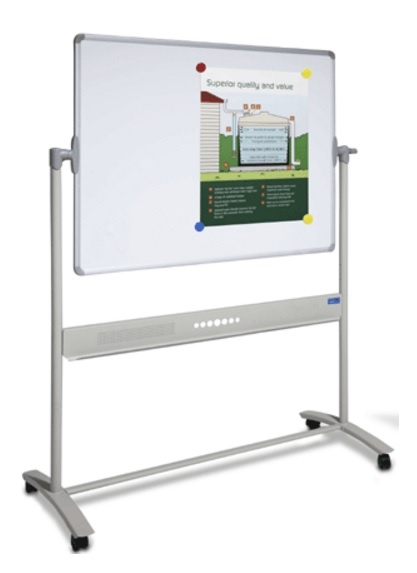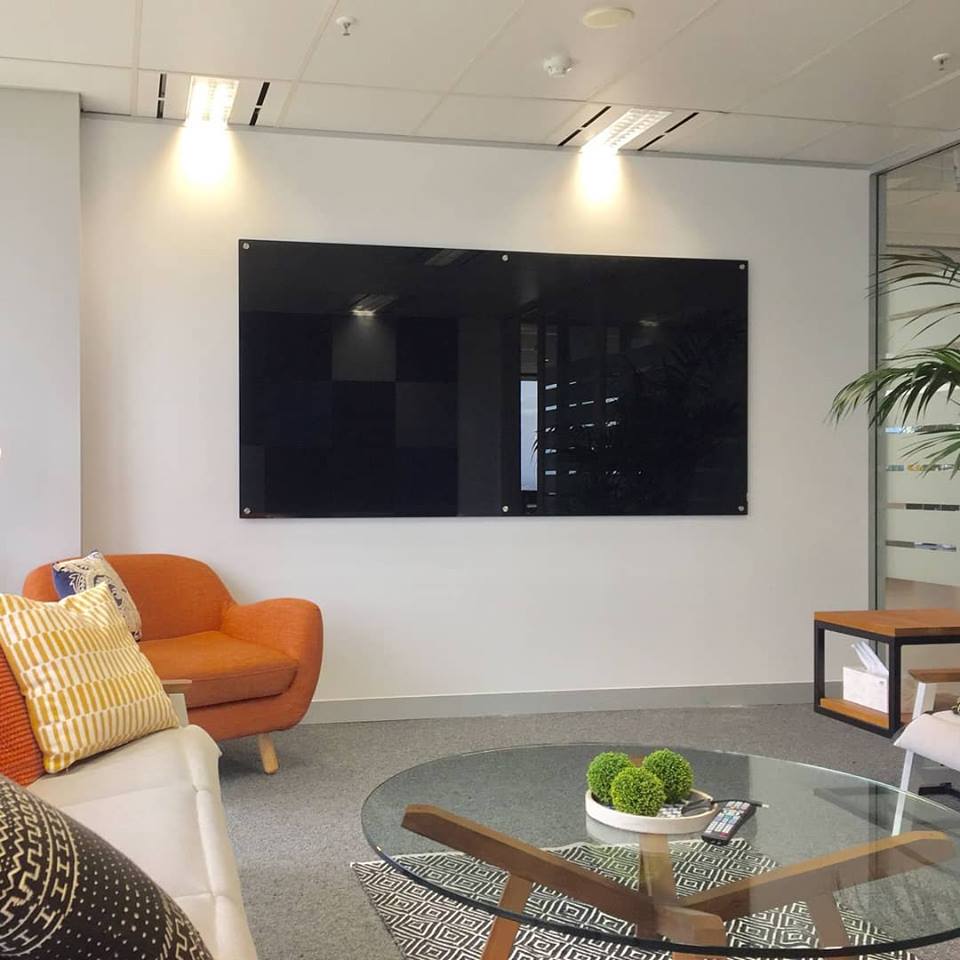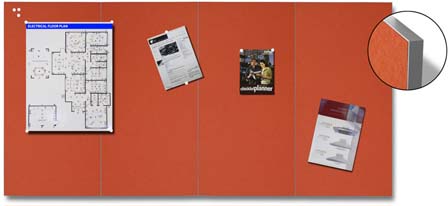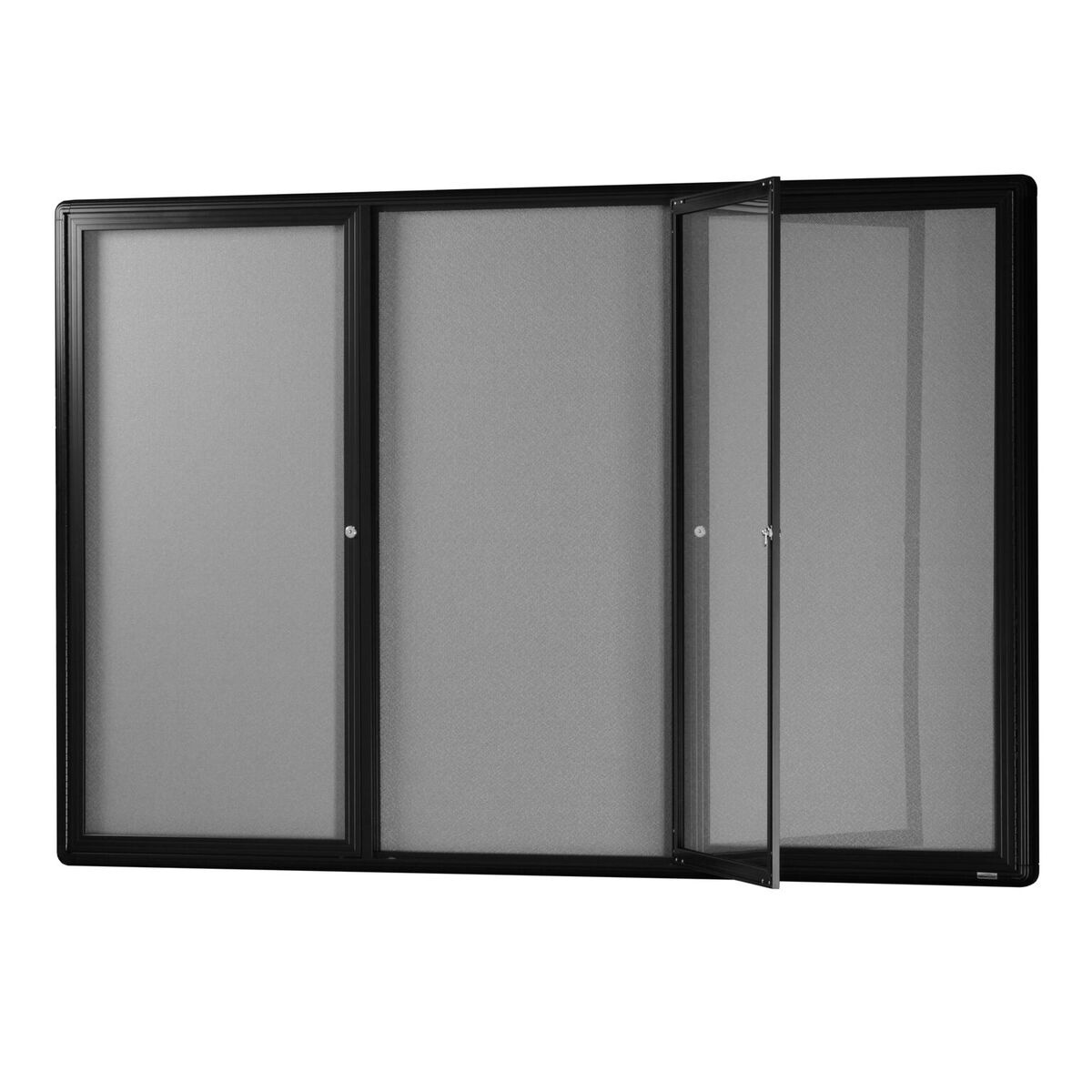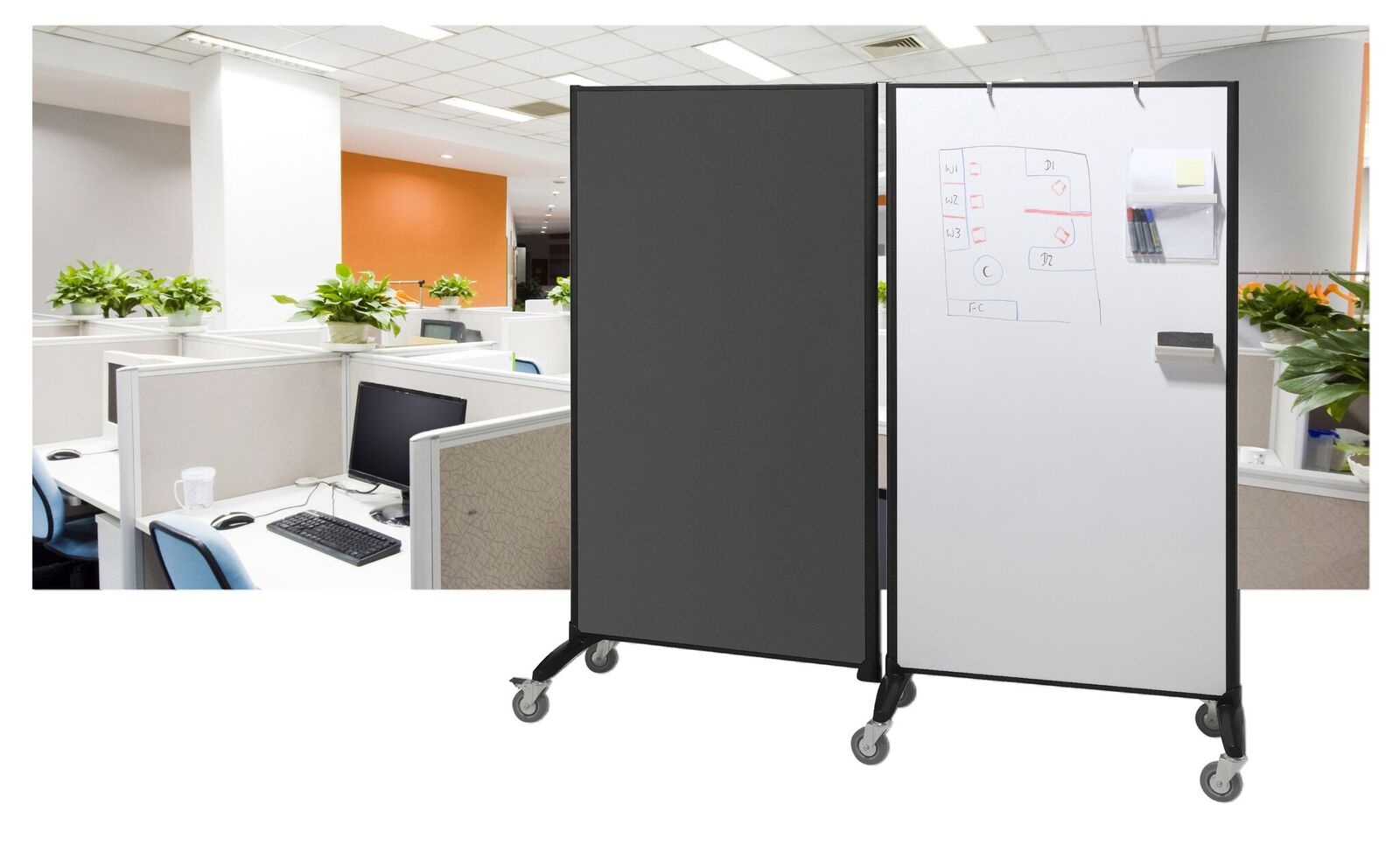Why a framed glass dry-erase board has become the star of my interior design office in Brisbane. Find out more.
My framed glass dry-erase board and why I love it
Hi, my name is Heather. I own a small interior design agency in Brisbane, Queensland. This is the story of how a framed glass dry-erase board became the star of my office.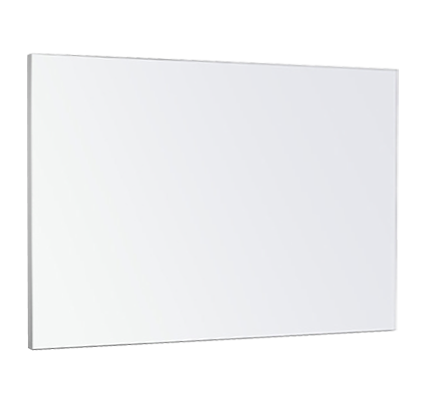
Starting my own business was one of the best things I’ve ever done ... and one of the scariest. Perhaps the most daunting prospect was designing my own office space. This was to be my calling card, of sorts, after all: clients would visit us and see first-hand my expertise (or lack thereof).
My task was to create a space for my team that was as functional as it was aesthetically pleasing. The most beautiful office in the world wouldn’t mean much if we couldn’t work in it! This meant prioritising the office fixtures. One such fixture? The office whiteboard.
As an interior designer, I wanted something that would serve both form and function. I’ve seen some truly ugly whiteboards in my time – boards that ghost at the drop of a hat and wear out within a few months. I knew I couldn’t work with something so icky.
Enter JustBoards with their beautiful range of glass whiteboards.
Why a glass whiteboard?
Glass whiteboards are the Rolls-Royce of whiteboards. Simply, the tempered glass they’re made with is the most durable whiteboard material on the market. It doesn’t scratch, dent, break, stain or wear out. This is why the crowd at JustBoards offers a lifetime warranty on their glass boards.
Glass is also one of the most versatile materials used in interior design.
Man-made glass has been around for a super long time (natural glass has, of course, been around for billions of years). According to archaeological evidence, the first instances of man-made glass appeared in Egypt and Eastern Mesopotamia around 3500BC. Since then, our use of glass has expanded to include everything from crockery to phone screens to - yes - glass whiteboards.
As a result, interior design has been heavily influenced by glass use throughout the years. Some notable movements include:
Baroque design
The Baroque period was an artistic style that started in Rome around the year 1600. It describes a style of symmetrical precision, heavy ornamentation and striving to be as grandiose as possible. We can still see some excellent examples of this style today in churches and cathedrals.
So where does glass come into it? Stained glass windows, of course. Their use rose to prominence during this period, but they weren’t the only interior decor getting the treatment. Baroque-era stained glass was also used extensively in everything from bowls to mirrors to furniture.
International style
The total opposite of Baroque is the International style, which prizes minimalism and functionality over form. It’s mostly known for its use in the corporate world (and on Apple products!). The modern skyscraper, with its gridlike outer structure, was “invented” by Internationalist architect Ludwig Mies van der Rohe in 1949.
However, the style didn’t stop at building exteriors. The Internationalists also wanted to design everything inside as well - right down to the decor and door hinges. For example, the famous “Barcelona chair” was designed by van der Rohe specifically for just one small building.
As for glass, the International style believes in ‘truth to materials’. Essentially, the material chosen for a certain use must be the best possible and should only be covered up, or even painted, if utterly necessary. This meant glass, being so versatile, featured heavily in Internationalist designs.
Modernism
My favourite of the bunch, Modernism, appeared in the early 20th Century. As a movement, it sought fresh alignment with the experience and values of modern industrial life. This led to artists and designers using new techniques and materials to create works that reflected the realities and hopes of technological progress.
As an interior design movement, Modernism is a style that adheres to clean lines, simple colour palettes and the extensive use of base materials. One of those base materials? You guessed it: glass.
Choosing my glass whiteboard
Narrowing down my choice of white board wasn’t as hard as I’d first thought. When I first looked at the JustBoards range, I’ll admit I was overwhelmed. Turns out though, I just had to rely on my interior design instincts.
I ended up choosing a framed glass dry-erase board for a few reasons.
First, I wanted the board to act as a focal point in my office. This meant a board that would catch attention and draw the eye. This is where I fell back on an interior design staple: framing.
Framing serves multiple purposes in interior design:
1.The frame colour works to harmonise interior colour schemes
2.The frame depth adds interest to the wall it’s hung on
3.The frame acts as a focal point, drawing the eye to whatever it’s framing.
 I knew if I wanted to feature my whiteboard, then it had to be framed. Lucky for me, JustBoards sells beautiful framed glass dry-erase boards, ready to hang.
I knew if I wanted to feature my whiteboard, then it had to be framed. Lucky for me, JustBoards sells beautiful framed glass dry-erase boards, ready to hang.
Second, I wanted a board that would be as lovely to use as it was to look at. Glass whiteboards are all that and more. They provide an unparalleled user experience. I just had to have it in my working life.
Third, I needed the board to match my existing decor. As much as it was going to be a focal point, I couldn’t have it sticking out like a sore thumb. JustBoards to the rescue again! Their glass whiteboards come in a truly staggering range of colours, so I was able to match my board to my brand.
How my framed glass dry-erase board became crucial in running my business
I know what you’re thinking: it’s just a whiteboard. And I’ll admit I was in your shoes even as I was buying the thing. What I came to discover was just how integral a simple whiteboard can be to the running of a business.
The importance of visual thinking
Visual thinking is an oft-overlooked strategy for solving complex problems. It’s essentially the act of intentionally harnessing visualisation to find answers that can’t be reached through verbal thought.
As an interior designer, I know well the power of visual thinking. We humans are visual creatures. Did you know that your brain processes images 60,000 times faster than it does text? Or that 90% of all information transmitted to our brain is visual? There’s a reason my industry works in visual mockups!
Imagine my delight, then, when I realised just how well our office whiteboard facilitated visual thinking. It shouldn’t have come as a surprise really. Brainstorming sessions are often led by whoever has a whiteboard marker in hand. There was just something special about using our big beautiful glass whiteboard that encouraged strategic visual problem-solving among my staff and clients.
Perhaps it was the aesthetics at work? The boards really are beautiful! Maybe it was their ease of use? Whatever the reason, I couldn’t have been more stoked with the outcome of some of our whiteboard meetings.
The benefits of the watercooler effect
We started using the whiteboard in work-in-progress and brainstorming meetings to great effect. My two off-siders are able to map ideas visually as they occur to them, resulting in more constructive meetings and a better outcome for the clients. It was when the board wasn’t being used in meetings, though, that things got interesting.
I’d read about the watercooler effect before. It’s a phenomenon observed in workspaces that have informal communal areas that encourage interpersonal communication. The space around the watercooler is the classic example and where the phenomenon gets its name, but these spaces can be anything from the coffee machine to the office noticeboard.
What I started to notice happening around our office whiteboard was pure “watercooler”. When it wasn’t in use in meetings, our whiteboard took up an ad-hoc noticeboard role in the office. Employees routinely wrote down social plans, encouraging messages and other informal notes.
Mondays quickly became meme day – employees would brandish their funniest memes from over the weekend and the office would vote on whose was the most hilarious.
I honestly couldn’t have been more stoked to see the watercooler effect at play in my own office. Studies show that it can increase worker productivity by up to 15% but more importantly (to me at least) our humble whiteboard was proving the focal point that drove office cohesion.
My framed glass dry-erase board is the star of the office
When I was shopping for a whiteboard, I thought I was shopping for a simple office resource. What I got instead was a beautiful interior focal point, an indispensable problem-solving tool, and a driving force in positive office culture. I couldn’t be happier with my purchase from JustBoards.
Get in touch today! Great service, great prices and Australia-wide delivery to your door. Call us today on 1800 654 917 or send an email to info@justboards.com.au.
